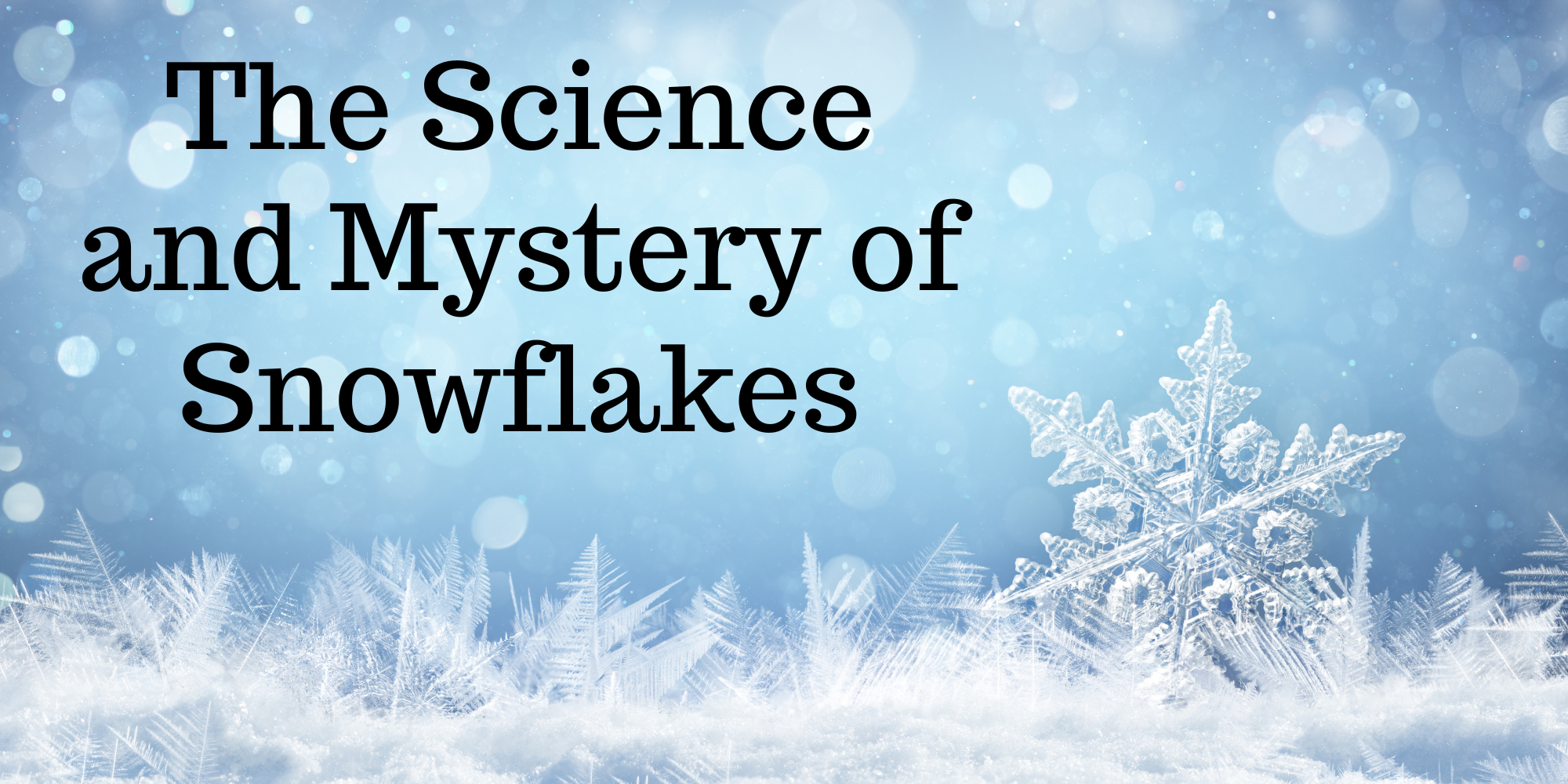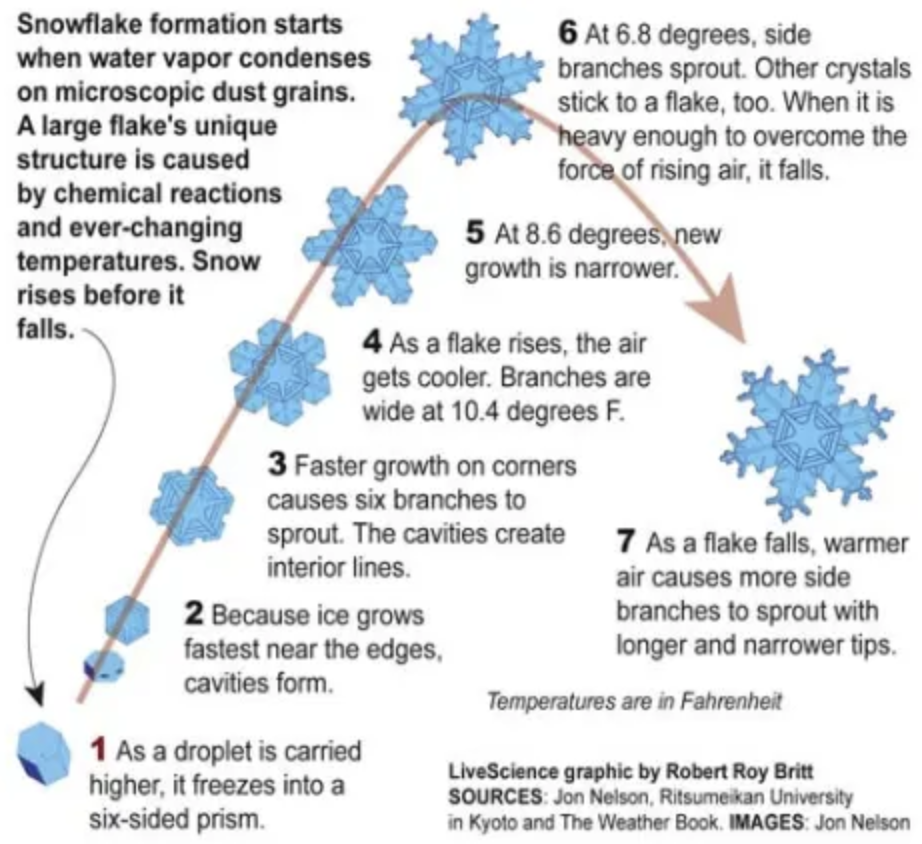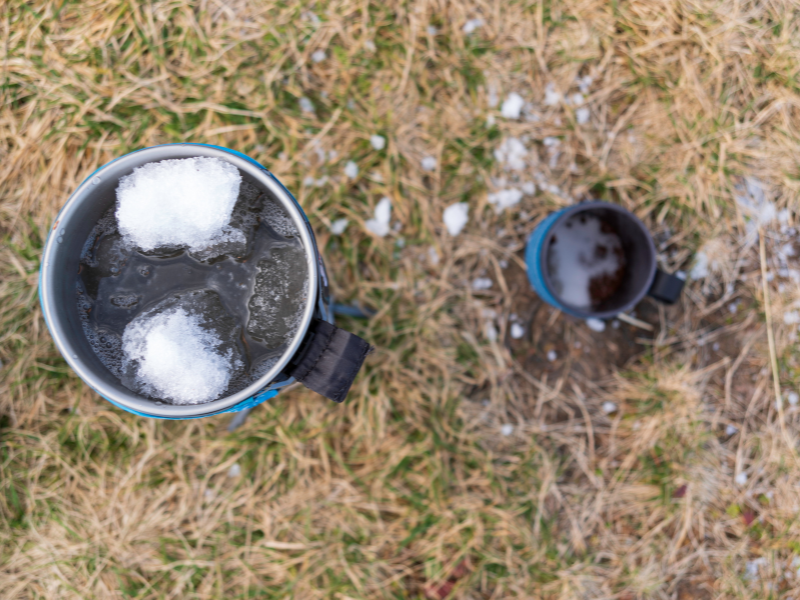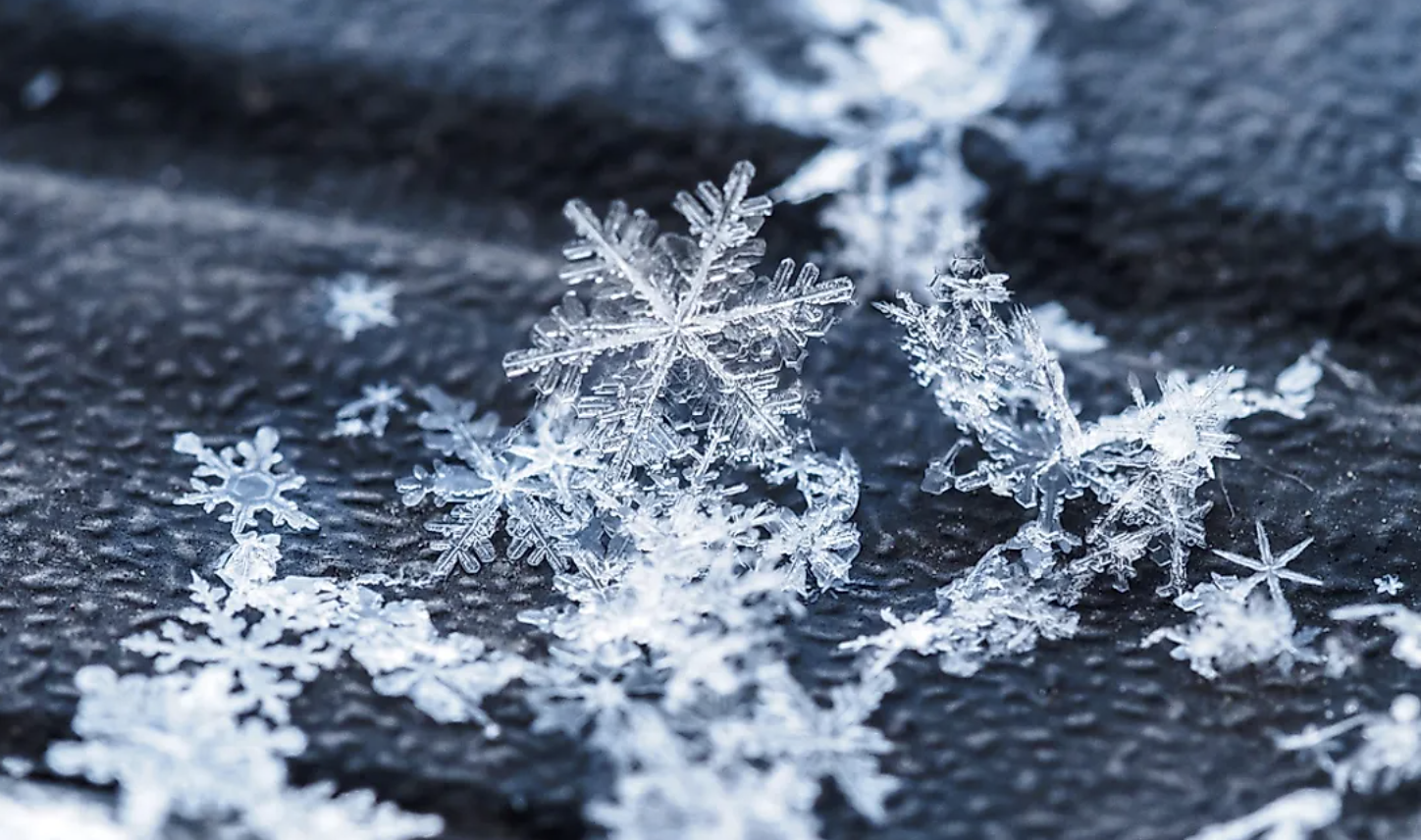
Step into the magic of winter's silent dance as we explore the whimsical world of snowflakes. These tiny, delicate wonders, like nature's own artwork, float down from the sky, each one a unique masterpiece. Forget the idea that all snowflakes look the same - these little crystals are as diverse as the snowy landscapes they adorn. From the cool science behind their creation to the special meanings people attach to them, snowflakes are a window into the beauty and wonder of winter. Join us on a journey where each snowflake tells a story, turning the ordinary into the extraordinary.
How Are Snowflakes Formed?
Snowflakes are formed through a captivating process driven by the molecular structure of water and specific atmospheric conditions. It begins with the condensation of water vapor onto tiny particles in the atmosphere, forming initial hexagonal ice crystals. As these crystals fall, they encounter water vapor and super cooled liquid droplets, allowing them to grow and develop intricate branching patterns through dendritic growth. The dynamic interplay of temperature and humidity during their descent influences the final shape of each snowflake.

By the time they reach the ground, having encountered varied atmospheric conditions at different altitudes, snowflakes emerge as unique, delicate masterpieces, with no two alike. This elegant dance between molecular symmetry and environmental factors gives rise to the breathtaking diversity and complexity observed in snowfall.
Can we Drink Melted Snow?
In general, melted snow can be safe to drink if collected from a clean, uncontaminated surface like a fresh field or a car roof. However, caution is necessary as it may contain pollutants or biological contaminants, especially if collected from areas with industrial pollution or near roadways.
The purity of the melted snow is crucial; it should be clear, without unusual odors or colors. If in doubt about the water's cleanliness, it's advisable to test the quality of snow water for any contaminant and treat it by boiling, using water purification tablets, or employing a portable water filter. Try one of those reliable and easy-to-use drinking water test kits like SJ Wave 16-in-1 Drinking Water Test Kit for accurate results.

While melted snow can serve as a water source in emergencies, assessing the environment and taking necessary precautions to avoid potential contaminants is essential for ensuring its safety. Visit the SJ Wave website and get to know more about their complete water solutions.

Interesting Facts About Snowflakes
No Two Snowflakes Are Exactly Alike. Each snowflake forms a unique hexagonal crystal structure due to the arrangement of water molecules in the freezing process. The intricate patterns are a result of the varying atmospheric conditions as the snowflake falls.
Formation at Specific Temperatures. Snowflakes form at specific temperatures, usually between -12 to -18 degrees Celsius (10 to 0 degrees Fahrenheit). The exact shape and structure of a snowflake depend on the temperature and humidity conditions during its formation.

Size Variations. Snowflakes can range in size from a few millimeters to several centimeters. The size is influenced by the amount of water vapor available for crystal growth and the length of time the crystal spends in the atmosphere.
Largest Snowflake. On the night of 27 January 1887, a fierce winter storm dropped snowflakes described as "larger than milk pans" over the Clark Fork River valley, in the vicinity of a ranch owned by Matt Coleman, near Missoula in Montana, USA.Reports suggest that they were up to 1 ft 3 in (38 cm) wide and 8 in (20 cm)thick, making it the largest snowflake ever recorded.

Avalanche Formation. The structure of snowflakes plays a role in the formation of avalanches. When snowflakes bond together to form a cohesive layer, it can create unstable conditions on a mountainside, leading to the potential for avalanches.
First Picture of Snowflakes. Wilson Bentley, a farmer from Vermont, is known as the first person to photograph snowflakes. In the late 19th and early 20th centuries, he captured thousands of images and contributed significantly to our understanding of snowflake structure. Today, advanced photography techniques continue to be used in snowflake research.
Conclusion
As we wrap up our exploration, we reflect on the beauty and uniqueness of snowflakes. In a world filled with hustle and bustle, taking a moment to appreciate these small wonders of nature can serve as a reminder of the magic that surrounds us, even in the coldest of seasons. Snowflakes, with their delicate complexity, continue to inspire awe and wonder, inviting us to marvel at the artistry of nature.

